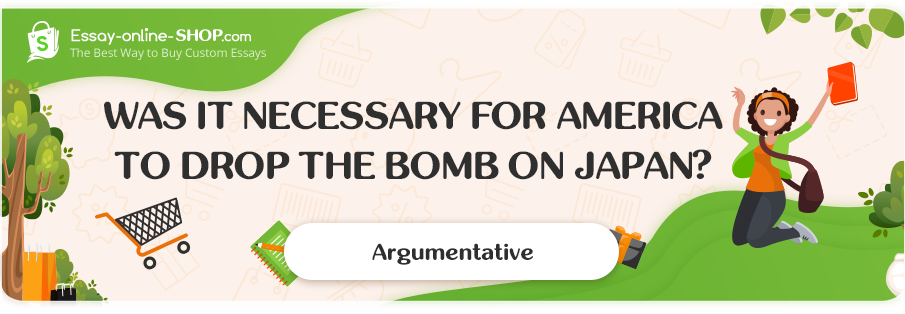
Introduction
Throughout its existence, Apple Inc. has become synonymous with innovation, invention and high quality. The company gets numerous preorders few months before the release of new products. Customers are rarely bothered by the steep price tags of Apple Inc. products. Apple Inc. utilizes a solid product strategy that has remained effective and successful. The company has a strong commitment to ensuring that consumers get the finest user experiences through innovative services, software, and products. Apple Inc. is convinced that excellent buying experiences through knowledgeable employees convey the value of the services and products of the company and greatly improves its capacity to attract and retain clients. The company is convinced that continuous research and development, as well as advertising and marketing are important to developing and selling innovating technologies, services, and products. Apple Inc. has been providing its customers with exceptional services without making profit motives as its main driver.
Excellent Customer Service
Former Apple CEO, Steve Jobs, had exceptional and operational visions concerning how individuals sought interaction with technology. In his opinion, these visions were crucial, since he was convinced that customers’ preferences are restricted to what they are aware of, rather than possibilities. Therefore, Apple Inc. pondered about the experiences of customers and sought to create innovative products. Apple’s obsession with customers resulted in a situation, where the company considered the formal market research to be less significant. Nevertheless, it is clear that Apple Inc. devotes a lot of time and resources to observe the manner in which its customers and other companies utilize technology. Through usability testing and participatory design, Apple Inc. has been able to include customer experiences into its process of design and development. Even though Steve Jobs was the most important customer, this fact did not hinder more systematic customer participation in the entire process.
Steve Jobs also taught his employees to consider Apple Inc. as an acronym with every letter corresponding to a specific step. The first stage is “approaching” clients through warmly welcoming them (Williams, 2013). In this stage, all employees are supposed to offer committed, passionate, and friendly customer service, since customers’ perception concerning the service is created at initial contact. Secondly, the employees are supposed to politely “probe” to get a better understanding of customers’ needs (McCann, 2012; O’Rourke, 2017). This entails asking open and closed-ended questions to be able to match a client to the appropriate product, not necessarily a costly one. Thirdly, employees are supposed to “present” solutions for any issues customers may have, so that they can build customer loyalty through enriching consumers’ lives (Solis, 2015). Next, the Apple Inc. specialists should “listen” for and solve any problems or customer concerns, which the employees should identify at the “probing” phase by seeking responses through questions (Gallo, 2012). For instance, some customers who have used PCs for a long time may not be willing to acquire new operating system but will fail to express it. However, an expert who identifies this concern will ensure a customer is comfortable with providing more information on the advantages of a new operating system. The last stage entails “ending” with a good-bye, while, at the same time, inviting a client to come back (Banks & Vacca, 2012). Given a client is satisfied after a transaction, he or she would, most likely, commend the brand to other potential buyers (Hong & Yang, 2009). Even after a customer buys devices, it is common to find specialists giving customers business cards, in case they have any concerns and so that the customer has a reason to come back.
You can buy argumentative essay on this or any other topic at Essay-Online-Shop.com. Don’t waste your time, order now!

Apple Inc.’s marketing dexterity is inspirational. At the time of its incorporation in January 1977, Apple Inc.’s advisor and investor, Mike Markkula, developed a three-pronged marketing approach (Gong, 2013). Remarkably, the philosophy is still at the center of factors that have made the company effective and turn in profits from the customer’s loyalty. This can be considered as a fitting example of strong marketing capabilities. The first point adopted by Apple Inc. is “empathy,” which entails properly understanding the requirements of customers better than other companies (Berlin, 2017). The subsequent point is “focus,” which involves the elimination of all insignificant and inconsequential opportunities, so that the company can triumph in the areas which it decides to concentrate on (Gong, 2013). Ultimately, the company emphasizes on “impute,” which is concerned with the manner in which it presents its products to customers (Ling, 2016). Apple Inc. is aware that first impressions are crucial, and having the best product, with the suitable software and of the highest quality, but presenting it in a half-hazard manner will make it appear disordered. Therefore, the company strives to present its products in an expertly and creative manner in order to impute anticipated qualities (Strauss, 2018). Apple Inc. has employed these philosophies to develop the most valuable company on the globe and to be among the most valuable brands internationally.
Apple Inc. operates in various regions of the world, including design, assembly, and distribution. Since the inception of Apple Inc. in 1977, the company has employed more than 70 million individuals all over the globe (Gong, 2013). A large percentage of the company’s employees have been positioned within the United States, even though Apple has had considerable manufacturing, marketing, sales and support companies in different areas of the planet, as well as some engineering processes in Tokyo and Paris (Guglielmo, 2018; Lakin, 2012). The business of the company is managed based on geography with its reportable divisions consisting of Japan, China, Europe, the Americas, and the Rest of Asia Pacific. Apple Inc. segment in the Americas covers South and North America, while in Europe it is comprised of all countries within the continent, together with Africa, the Middle East, and India. Further, Asian nations that are not part of Apple’s other reportable divisions, together with Australia, are included in the rest of Asia Pacific, while Taiwan, Hong Kong, China and covered in the larger China. Even though these divisions report the same services, software and hardware products, every one of them is independently managed to achieve better alignment with the location of Apple Inc. distribution partners and customers, as well as the exceptional market underlying forces of every region.
Apple’s Return and Refund Policy
The majority of stores emphasize on provision and practice of excellent customer service, particularly to improve their sales. However, customer service does not and should not end after the customer has made the purchase. Retailers are usually tested when customers return products, while effectively telling them that the sales transaction was not successful, since an item was defective, or that they were able to identify something of higher quality or a more competitive price (Li, Xu, & Li, 2013). In Apple’s case, if a customer is dissatisfied with his or her new Apple product, or if a device is malfunctioning, they are encouraged to immediately call Apple Support and make a report of a faulty product. In case faulty or defective hardware is non-Apple branded, a customer is encouraged to contact Apple Store Customer Care and make a report immediately. Further, a customer can also review their rights in the sales policy that can be found on Apple’s website.
Even though customers are allowed to return devices that they feel are defective, there are guidelines that govern this process. Apple Inc. allows customers 14 calendar days to return products that do not satisfy them (Apple, 2018). The returns may be prepared through the internet in company’s order status website. The returns are covered under a sales and refund policy that allows the customer to indicate an intention to return within 14 days of the item’s receipt (Zschau, 2011). Subsequent to indicating the intent, the customer has 14 more days to return the item or make arrangements for them to be collected. The company also accepts software returns within the same period. However, this is only applicable when the seal was not broken. This aspect is an addition to the liberty of consumers to return items that they consider faulty. Customers returning items must provide their web order number, address from where Apple will collect the product and a contact number after which Apple Inc. provides a Return Material Authorization number that should be indicated on the package to make sure that the return is handled swiftly (Apple, 2018). The company reminds customers to reset or cancel their wireless accounts before returning the items.
Apple’s customers can decide to either return or ship back their products to the store. Through accessing the Self-Service page on the company’s website, customers can print a return label that allows them to drop off their items at a pickup location. Upon printing the return label, it should be attached to the package containing the item being returned and dropped at the convenient pickup point. The customers can also return the products directly to the stores, where they purchased them from within 14 days after an indication of intent. After Apple Inc. receives the item, refunds are immediately initiated, with the manner in which the refund is processed being dependent on the original mode of payment. Refunds for debit or credit card payments are sent to the banks that issued the cards within five business days, while items bought on the Apple’s website through the company’s Gift Card are refunded through the email (Zschau, 2011). Customers can return items and have them exchanged or replaced subject to availability of items in the store. They are encouraged to confirm stock availability before visiting the stores by contacting calling customer care or checking company’s website (“Apple”, 2018). Ideally, refunds are processed within five to seven business days after the return of the items with cash payments, like wire transfers or cheques requiring bank details, so that Apple Inc. can send the refunds directly to the customer’s account.
- FREE revision (within 2 days)
- FREE title page
- FREE bibliography
- FREE outline (on request)
- FREE e-mail delivery
- FREE formatting
- Quality research and writing
- 24/7/365 Live support
- MA, BA, and PhD degree writers
- 100% Confidentiality
- No hidden charges
- No AI-written content
- Complete Authenticity
- 12 pt. Times New Roman
- Double-spaced/Single-spaced papers
- 1 inch margins
- Any citation style
- Up-to-date sources only
- Fully referenced papers
Apple’s customers are eligible for the iPhone upgrade program, which is the company’s reaction to carrier offers that allow customers to finance their devices for a specific amount of money every month. The program enables customers to purchase new iPhones by paying in 24 installments, and after making 12 payments, they can automatically get a new device without additional costs. Initially, carriers gave customers a particular subsidy on their phones for entering into two-year contracts. Nevertheless, such agreements are waning and being substituted with monthly plans. The program releases customers from being bound to one carrier for 24 months, since they decide on a new carrier when signing up for the programs and can switch and move to a different carrier if they are not satisfied without struggling to get out of a two-year plan. This also encourages more individuals to purchase iPhones each year, which drives company’s profitability. The upgrade program of iPhone is open to the customers in the United States, China and the United Kingdom who wish to purchase the latest iPhone devices that include iPhone 8, iPhone 8 Plus and iPhone X. However, Apple Inc. has offered a trade-in program for those who want to purchase older models of the iPhone device.
Apple Inc. also offers iTunes to its customers as a service. According to Rogers (2013), the revenue of the Apple Inc. which originates from iTunes has been steadily increasing as the company experiences exponential growth in profitability from its diverse variety of services. Even though this is the case, approximately 18% of all customers are paid subscribers of its services, which leaves a lot of room for enhanced recurring revenues. Noticeable, Apple Inc. Music seems to be a revenue source, with indications that the streaming music service may get more paid-up subscribers in comparison to Spotify shortly (Worstall, 2012). With the increase in revenue from different services other than physical devices, such as the iPhone, Apple is focused to become more and more profitable as more of its customers take up and subscribe to the services that it is offering through Apple Store, Apple Music, and iTunes among others.
iTunes is quickly growing to be among the largest media companies on the planet. The large media library associated with iTunes began with songs being downloaded for $0.99 (Mehta & Steinman, 2016). However, the company is currently selling Mac and iOS applications, the prices of which are considerably higher than 1$, together with New York Times subscriptions and season passes for various television shows. The store generates about 30% of Apple’s revenues, and even after the company pays transaction costs, it remains with a substantial amount. The iTunes division of Apple Inc. is still smaller than companies, such as Disney and News Corp, whose turnover is significantly higher. Nevertheless, for a business that puts a lot of emphasis on creating of innovative devices, Apple Inc. has been able to create one of the largest media realms on the globe, as a simple additional project, putting it ahead of the competition with such big companies like Microsoft, Samsung, and Google.
Conclusion
The most effective product strategy that has been employed by Apple Inc. is the development of high-quality products, not necessarily dwelling on profit margins. They have maintained this exception products strategy through holding on to exceptional standards of quality. The company has also avoided joining the trend that numerous other device manufacturers have adopted. The trend entails packing products with bloating features that may be viewed as astoundingly advanced, but subsequently, complicate the operation of the devices and make the user-unfriendly. Apple Inc. has been providing simple and practical product packaging through creating functional appeal, without appearing plain and boring. Its strategy also emphasizes on quality more than quantity. When other companies strive to produce new devices for the market in quick succession within a short time and having diversified collections of products, Apple Inc. has chosen to adhere to its area of expertise. As such, the company puts more emphasis to particular products and improves them, rather than diverging to develop other devices and products in the same class.






